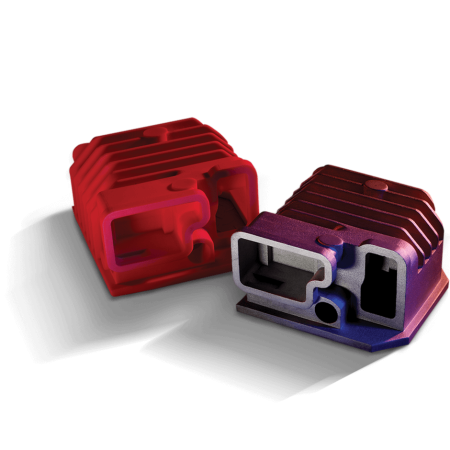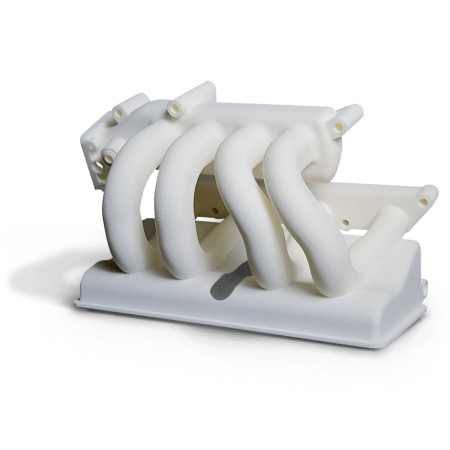When agricultural and construction equipment giant Case New Holland (CNH), of New Holland, Pa., wanted to bring solid imaging technology in-house, it performed a thorough evaluation of several rapid prototyping technologies.
The result was that CNH purchased an SLS additive manufacturing machine. Since then, the company has been using it to churn out DuraForm sand casting patterns. These patterns are used to cast metal prototypes and low volume production parts.
The impressive time savings CNH has achieved using its SLS system has made the investment worthwhile.
The company has discovered the benefits of a technology that offers several material choices and a high degree of application diversity. In addition to sand casting patterns, CNH also uses its SLS system to produce sturdy DuraForm prototypes and investment casting patterns.
“Our main goal was to find a system that would help us streamline the creation of sand casting patterns,” says Luke Nolt, casting specialist at CNH. “We also wanted a system that we could use for a variety of other applications.” Most of CNH’s sand cast parts are made of gray and ductile cast iron; others are made with cast steel.
The Way it Was
At one time, CNH delegated most of its pattern-making work to service bureaus. Interestingly, none of these companies used the SLS process. Most of CNH’s experience with SLS came as a result of its pre- purchase research.
Using a service bureau and non-SLS processes had several drawbacks. First, the patterns and parts were dimensionally unstable and susceptible to moisture. Second, CNH often had to “wait in line” for parts, sometimes alongside the competition.
“These issues helped lead us to the SLS machine and DuraForm material,” says Nolt. “The SLS process certainly was not the least expensive option out there, but it offered what we needed, showed the most potential to expand our range of applications, and helped us achieve the accuracy and dimensional stability we were looking for. The DuraForm material also was durable enough to withstand the foundry molding processes.”
For CNH, one or two prototypes won’t do. Typically, it needs 20 to 50 cast metal prototype parts to complete testing for function and durability.
“At first we weren’t sure we could get 50 cast parts from the sand casting patterns we made using DuraForm, but it worked with no problem,” Nolt says. “We’ve even turned about a dozen of these sand casting patterns into low-volume production patterns that have yielded as many 1,200 parts for actual production.”
At first, CNH made simple DuraForm patterns that could be built easily in their entirety within the SLS system build chamber. Soon the company moved on to larger patterns, which are built in segments and then pinned and glued together.
“Making these segmented patterns worked pretty well for us,” Nolt says. “At first we were concerned that the DuraForm parts might fracture since the patterns undergo a lot of pressure and abrasion from the sand. But it worked very successfully.”
New techniques
Time and experience have helped CNH expand its skills with DuraForm. In addition, to split and mounted patterns, CNH sees the benefits of simply making a DuraForm pattern insert. These inserts are mounted into standard match plates at the foundry. This method has made it easier to create patterns with offset parting lines.

